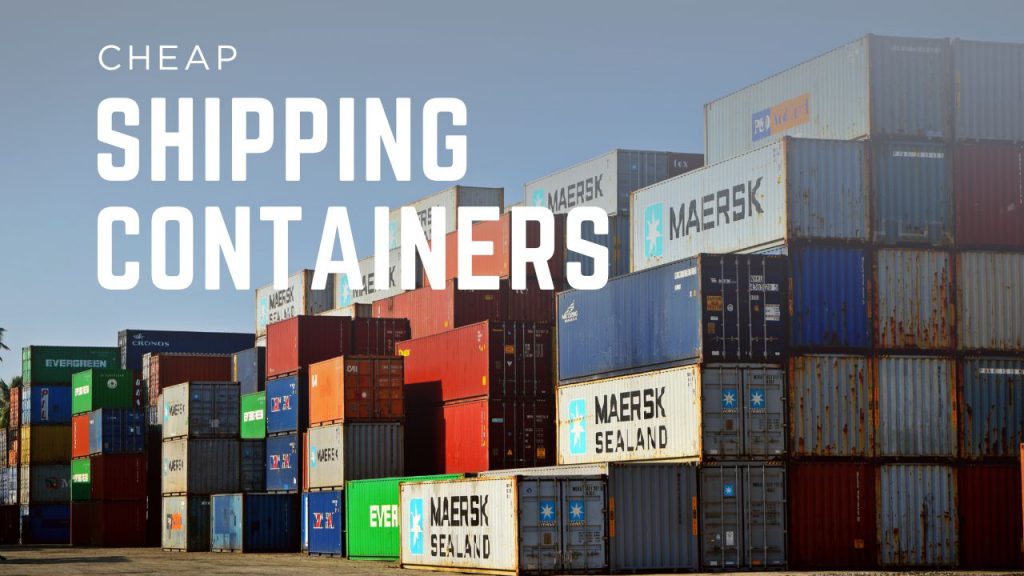Shipping containers are no longer just a tool for ocean freight. They’ve become essential across industries—from logistics and construction to retail storage and off-grid housing. But buying them at a fair price without sacrificing durability is another story. If you’re in the market and trying to figure out where to buy cheap shipping containers, you need more than a sales pitch—you need strategy.
This guide breaks down how to source affordable containers, what to watch out for, and how transportation management solutions can improve your buying decisions.
Why Price Matters—But Isn’t Everything
Yes, “cheap” matters. But only if it still meets your operational requirements. The trick is to balance cost with:
Structural integrity
Compliance with international standards
Usability for your intended purpose (shipping, storage, modification, etc.)
A poorly sourced container might seem like a deal, but hidden damage or corrosion can cost you double in repairs or replacements.
5 Legitimate Sources to Buy Cheap Shipping Containers
When looking for the best deals, consider these proven outlets:
1. Direct from Shipping Lines
Many shipping companies sell off older containers after 10–15 years of use. They’re often discounted and still structurally sound for storage or modification.
2. Container Resellers and Brokers
Companies specializing in container sales offer grading systems (e.g., cargo-worthy, wind- and water-tight) that help you understand what you’re getting.
3. Government Surplus Auctions
Agencies like the U.S. General Services Administration (GSA) auction off containers used in federal logistics at competitive prices.
4. Online Marketplaces
Websites like eBay, Craigslist, or ContainerAuction.com let sellers offload used inventory—but be cautious of scams or misrepresented conditions.
5. Local Depots and Yards
Sometimes the best deals are offline. Local container yards often have inventory priced to move, especially if you’re willing to handle your own transport.
Table: Container Condition Grades & What They Mean
| Grade | Description | Suitable For |
|---|---|---|
| New (One-Trip) | Used once, minimal wear | Retail, living spaces, long-term use |
| Cargo-Worthy (CW) | Meets ISO standards for global shipping | International freight |
| Wind and Water Tight | Not certified for shipping, but sealed against leaks | Storage or modification |
| As-Is | Sold without inspection, likely has damage | Scrap, parts, or low-risk storage |
Tips to Cut Costs Without Cutting Corners
Smart buyers don’t just look at the sticker price. They optimize the entire acquisition process:
Buy in bulk if you need multiple containers.
Pick up from the depot instead of paying for delivery.
Choose off-peak seasons when inventory is high and demand is low.
Inspect in person whenever possible—photos don’t show everything.
Negotiate—especially if buying older units or taking multiple containers.
The Role of Transportation Management Solutions
Once you’ve sourced a container, how you move it is just as important. Integrating transportation management solutions ensures you:
Minimize freight costs
Get real-time updates on container delivery
Choose the most efficient routing and carriers
Reduce loading/unloading time and damage risk
By using a TMS (Transportation Management System), businesses can avoid paying inflated fees and improve visibility from depot to destination.
Watch Out: Common Pitfalls When Buying Cheap Containers
Even experienced buyers fall into these traps:
Overlooking rust or floor rot
Not checking corner castings or door seals
Assuming “used” means “good enough” without inspection
Paying inflated transport fees that cancel out savings
Container Reuse and Circular Economy
A construction firm in Arizona sourced 20 wind- and water-tight containers from a California depot for $2,000 each—30% cheaper than national dealers. By arranging pickup through their TMS platform, they coordinated a backhaul route with an empty carrier, slashing transport costs by 40%.
Result: On-time delivery, no damage, and full functionality—all for less than most quotes from national vendors.
According to a study published in the Journal of Cleaner Production, extending the life of shipping containers through reuse significantly reduces the carbon footprint of logistics operations, especially when paired with optimized routing (source).
Cheap Shipping Containers—Smart Buyers Win
Finding cheap shipping containers isn’t just about price—it’s about total value. When you understand sourcing channels, container grades, and integrate smart transportation logistics, you get durability, compliance, and savings.
The best deal isn’t the lowest number—it’s the smartest buy that meets your needs and delivers ROI.




